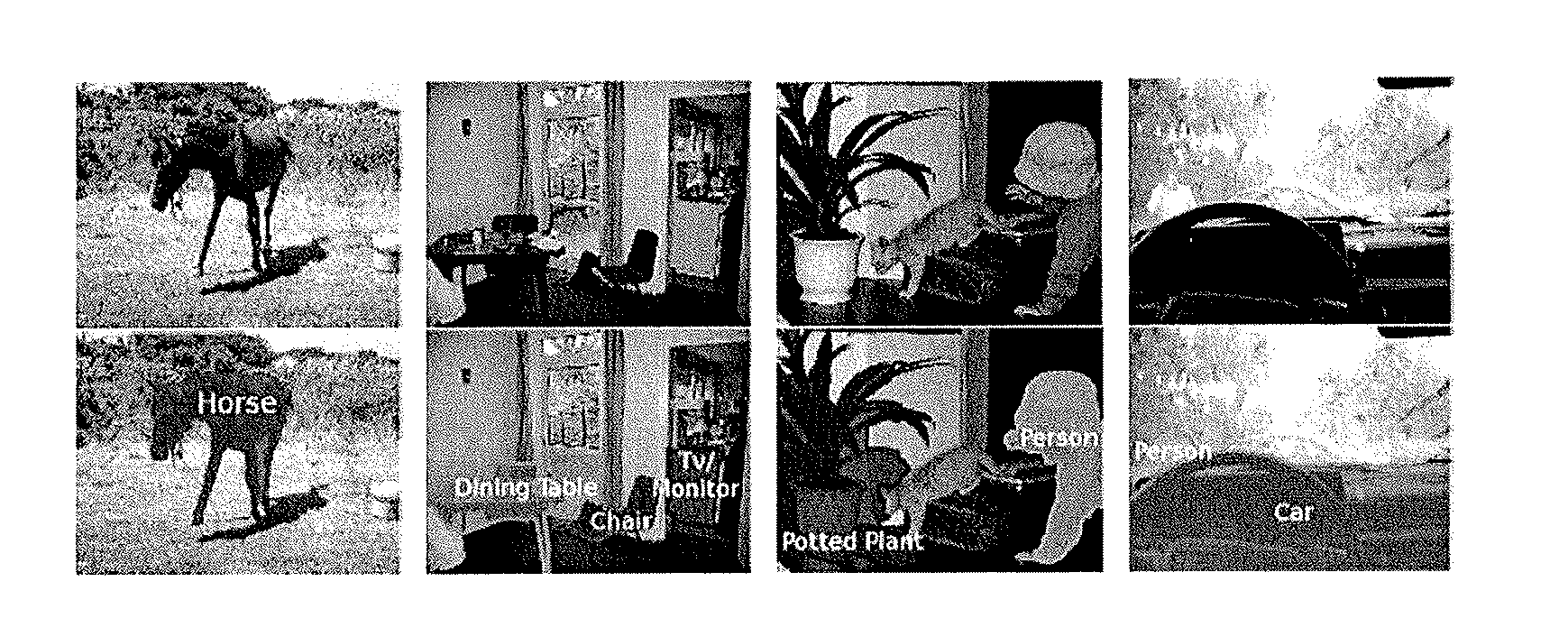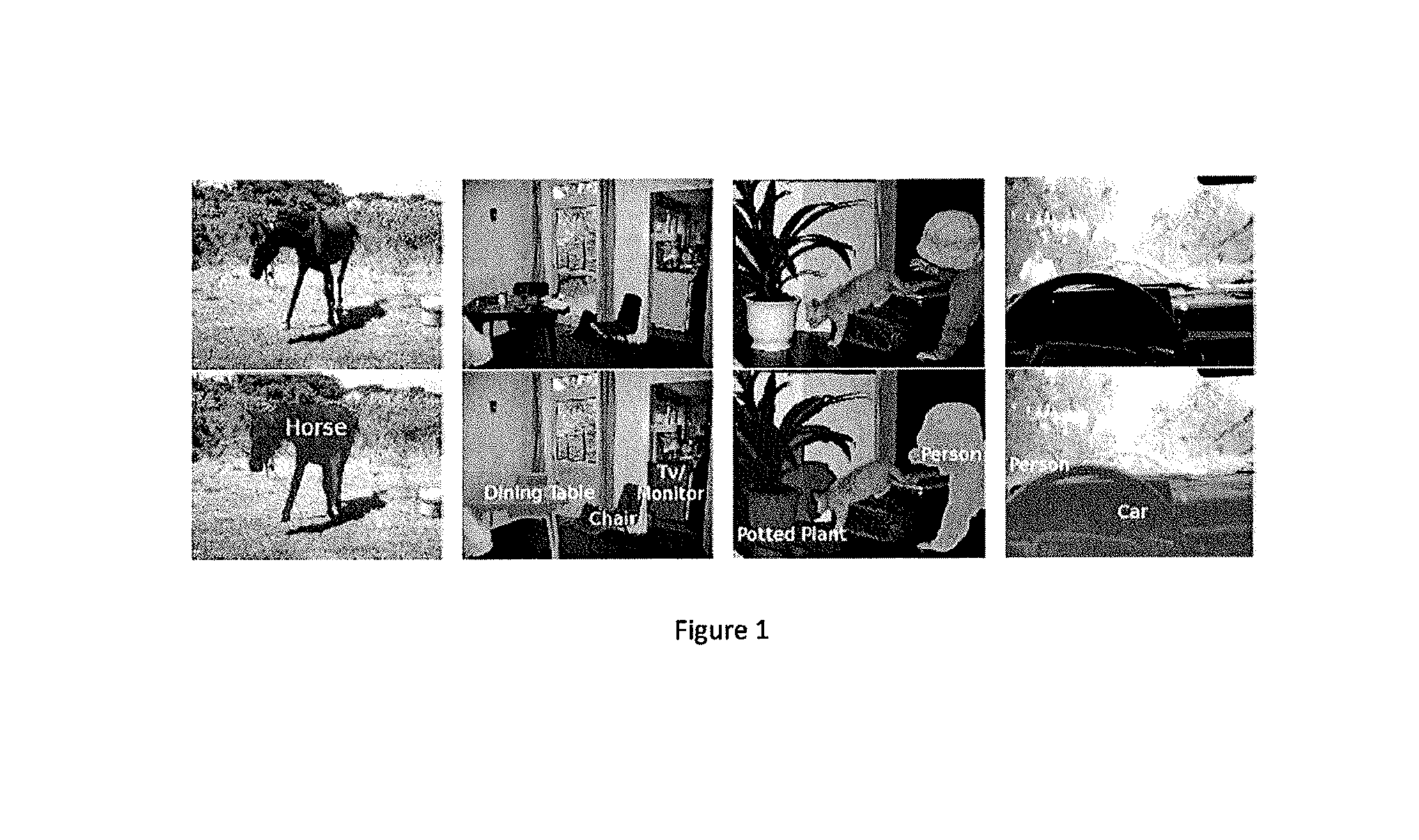Semantic segmentation method with second-order pooling
a segmentation method and feature technology, applied in the field of segmentation and feature pooling, can solve the problems of not achieving competitive performance in realistic imagery, much lower recognition accuracy, and descriptors with slightly inferior accuracy than the ones described
- Summary
- Abstract
- Description
- Claims
- Application Information
AI Technical Summary
Benefits of technology
Problems solved by technology
Method used
Image
Examples
Embodiment Construction
Second-Order Pooling
[0029]First, a collection of m local features D=(X, F, S) is assumed, characterized by descriptors X=(x1, . . . , xm), xεRn, extracted over square patches centered at general image locations F=(f1, . . . , fm), fεR2, with pixel width S=(si, . . . , sm), sεN. Furthermore, a set of k image regions R=(R1, . . . , Rk) is provided (e.g. obtained using bottom-up segmentation), each composed of a set of pixel coordinates. A local feature di is inside a region Rj whenever fiεRj. Then FRj={f|fεRj} and |FRj| is the number of local features inside Rj.
[0030]Local features are then pooled to form global region descriptors P=(p1, . . . , pk), pεRq, using second-order analogues of the most common first-order pooling operators. In particular, a focus is on multiplicative second-order interactions (e.g. outer products), together with either the average or the max operators. Second-order average-pooling (2AvgP) is defined as the matrix:
Gavg(Rj)=1FRj∑iFi!Rj)xi·xiT,(1)
and second-ord...
PUM
 Login to View More
Login to View More Abstract
Description
Claims
Application Information
 Login to View More
Login to View More - R&D
- Intellectual Property
- Life Sciences
- Materials
- Tech Scout
- Unparalleled Data Quality
- Higher Quality Content
- 60% Fewer Hallucinations
Browse by: Latest US Patents, China's latest patents, Technical Efficacy Thesaurus, Application Domain, Technology Topic, Popular Technical Reports.
© 2025 PatSnap. All rights reserved.Legal|Privacy policy|Modern Slavery Act Transparency Statement|Sitemap|About US| Contact US: help@patsnap.com



